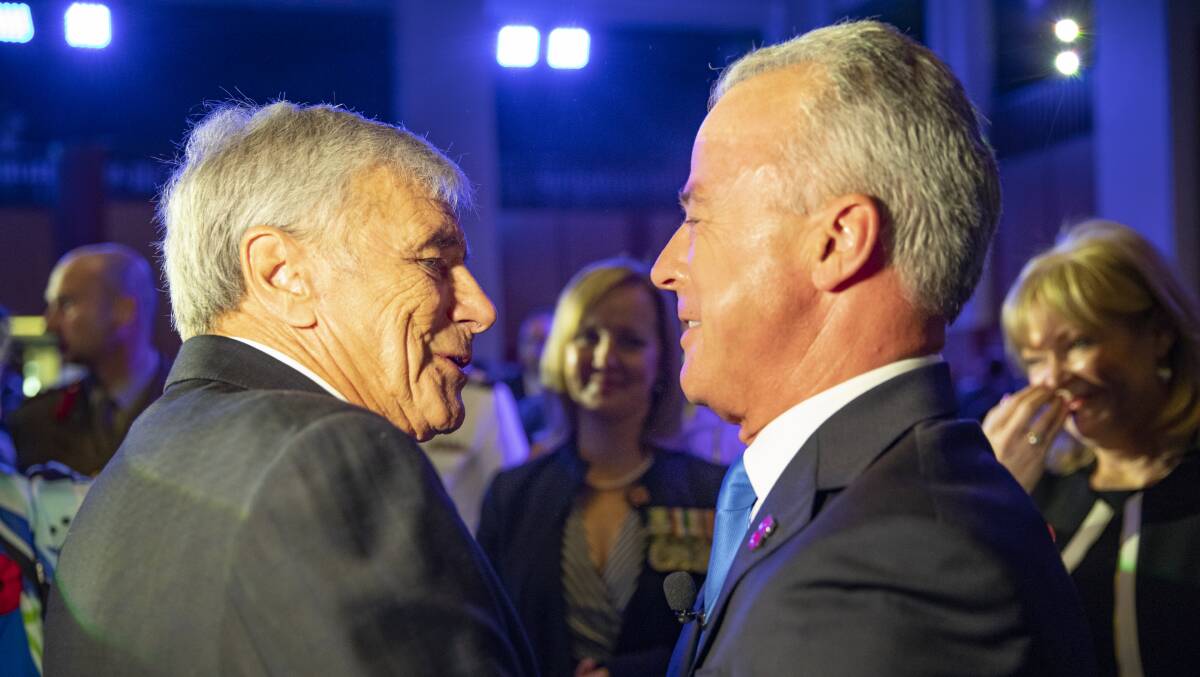
The $500 million redevelopment of the Australian War Memorial is the biggest thing to happen in Canberra in decades with the exception of light rail. It is also second only to light rail in the amount of controversy it has generated since it was announced in 2018.
Subscribe now for unlimited access.
or signup to continue reading
The redevelopment's strongest early champion, then AWM director Dr Brendan Nelson, always maintained this would be a great thing for Canberra and for the nation.
When the plans, which include the demolition of Anzac Hall which was only completed at a cost of $17 million in 2001, were unveiled last November he stressed the need to tell the stories of recent generations of diggers. There were concerns those who took part in peacekeeping operations, served in East Timor and have fought in Afghanistan, and in Iraq, were not adequately represented.
Dr Nelson recalled standing next to Mrs Pam Palmer, the son of Scott Palmer - one of three Australians killed in a helicopter crash in Kandahar in 2010 - at the opening of the AWM's "modest but powerful" Afghanistan exhibition in 2012. The cowling from the US Blackhawk was a prominent feature.
"That cowling was used as a stretcher to bring out her son," Mr Nelson said. "She buried her face in my shoulder and wept uncontrollably, and said: 'Thank-you for making my son's life mean something, and his memory live.'"
Australia's battleground experiences did not end after Korea and Vietnam. Nobody would say the later generations of diggers don't have many powerful stories that should be told.
That is why it is important to remember the ongoing debate is not about the worthy intent that lies behind the redevelopment which will increase the AWM's footprint by 80 per cent.
Issues being contested include the sheer scale, the perceived extravagance, and the potential to change the balance of a national icon conceived as a shrine to the fallen which uses "significant artefacts" to tell their stories.
The project, with its broad political support, now looks certain to proceed. But the voices of concern are unlikely to fade away any time soon.
There is also strong opposition to what is seen by many as the wanton destruction of Anzac Hall, which was awarded the 2005 Sir Zelman Cowan Award for Public Architecture, decades before the end of its design life.
This seems to be the main reason the Australian Heritage Council, the federal government's heritage advisory body, won't bless the plan in its current form.
Writing in a submission to the AWM's public consultation process in July, the council's chair, former Liberal minister David Kemp, said ongoing expansion was "not a sustainable intent over the long term" and "in the current circumstances cannot be achieved without significantly impacting listed heritage values".
Noting the heritage council was unable to support the planned redevelopment, he urged that "the matters above be given serious attention".
Even a generally supportive heritage impact statement prepared by heritage architects Hector Abrahams at the behest of the AWM expressed concern over the loss of Anzac Hall: "The loss of ... Anzac Hall ... has a substantial negative impact on the heritage impact of the place. We understand this is controversial".
The concerns raised by Mr Kemp, and echoed to a lesser extent by Hector Abrahams, do much to undermine recent claims by the AWM Council chair, Kerry Stokes, that the main opponents to the project were "special interest groups from Canberra" and did not reflect broader community opinion.
The project, with its broad political support, now looks certain to proceed. But the voices of concern are unlikely to fade away any time soon.

